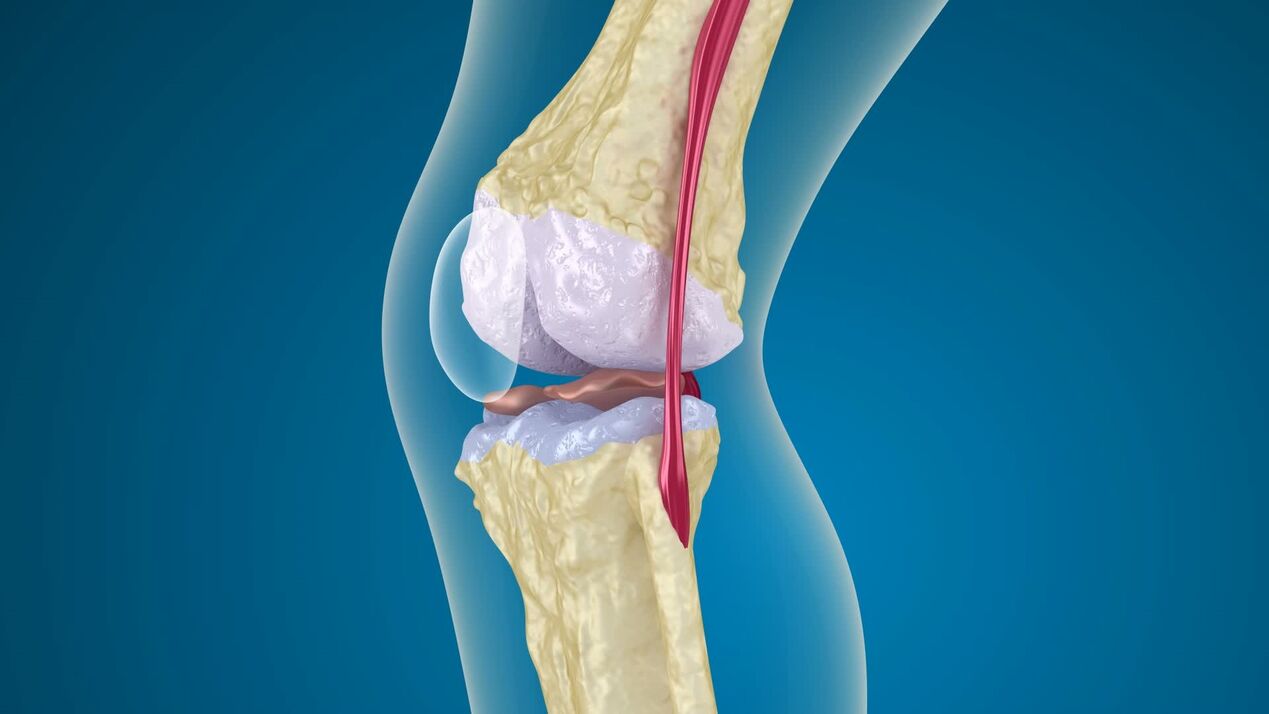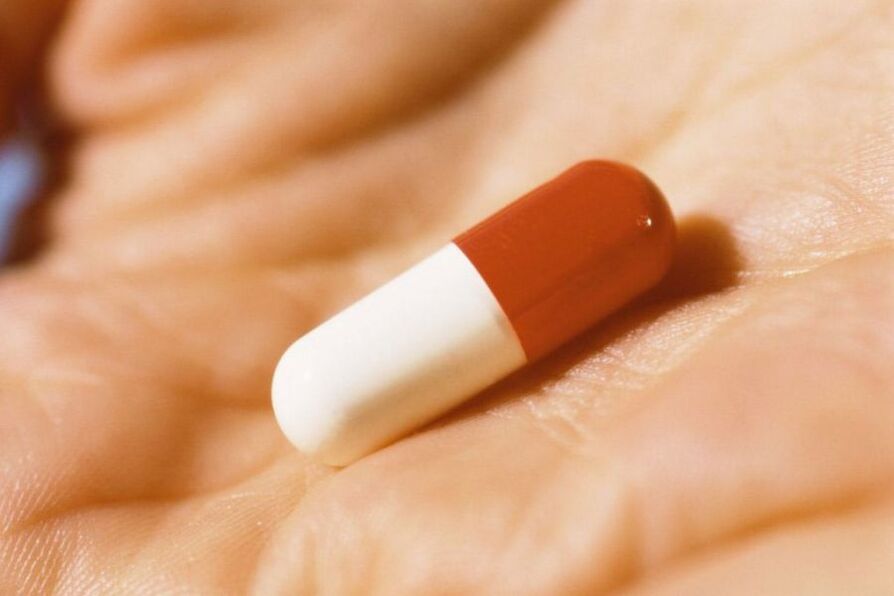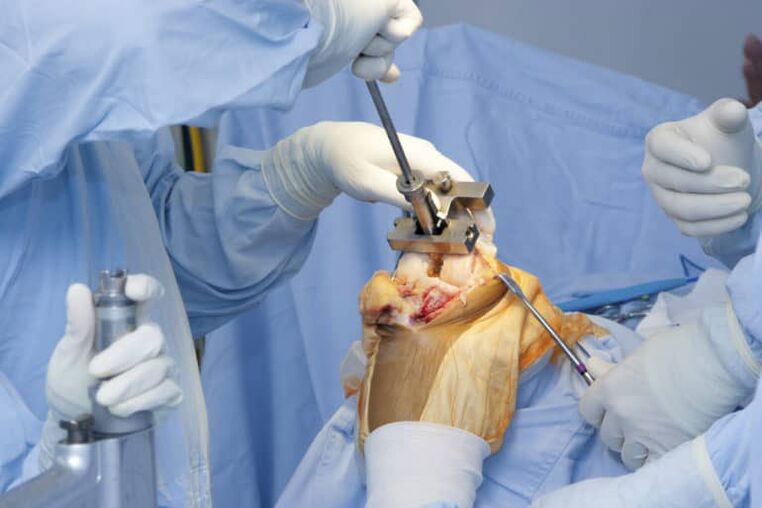
Osteoarthritis of the knee joint is a degenerative damage to the cartilage of the knee joint, as a result of which it is destroyed. Osteoarthritis is the most common pathology and according to doctors about 80% of people suffer from this pathology to one degree or another. It is the third most common disease after cancer and heart disease. All this suggests that the treatment of osteoarthritis of the knee joint still has no methods that would completely help eliminate the disease.
Principles of treatment
There are several principles for the treatment of osteoarthritis of the knee that should be at the heart of the treatment of the disease:
- The knee joint damaged by osteoarthritis should be immediately relieved of excessive physical activity during therapy. It is not so easy to cure osteoarthritis of the knee joint, but it will make it possible to prevent complications. If possible, it is generally necessary to limit the movement of the joint and to follow the established regimen prescribed by the doctor.
- In parallel with the treatment, do not take too much care of yourself so as not to start atrophy of muscle tissue. It is best to engage in affordable physical therapy. Which doctor treats the joint, he will give direction to the therapeutic exercise.
- Physiotherapy is a great and effective way to improve your initial treatment. Physiotherapy always includes electro-, magnetic, laser therapy and shock wave therapy.
- Sanatorium treatment will also be useful for patients - with osteoarthritis it is necessary to visit specialized resorts at least once a year.
- The main treatment is to fill the joint with oxygen. For this, the so-called oxygen therapy is carried out.
- The drugs are mainly anti-inflammatory drugs and painkillers, intraosseous blockages.
- An indispensable component of proper rational treatment will be a change in eating habits, elimination of foods that provoke excess salt in the body, saturation of the body with calcium, minerals and vitamins.
Medicines
Conservative therapy includes treatment of gonarthrosis of the knee joint:
- non-steroidal anti-inflammatory drugs;
- chondroprotectors.
Non-steroidal anti-inflammatory drugs
Non-steroidal anti-inflammatory drugs are essential in the treatment of osteoarthritis. This group of drugs allows you to quickly stop the inflammation, eliminate puffiness, so the painful sensations quickly disappear. The drugs have antipyretic and analgesic effects. Therefore, they are recommended for the treatment of joint pathologies, including osteoarthritis of the knee.
Non-steroidal anti-inflammatory drugs for the treatment of DOA of the knee joint (deforming osteoarthritis) are divided into several groups. According to their composition, they can be divided into acidic and non-acidic.

When using NSAIDs, you must remember the risk of side effects, which is why it is strictly forbidden to exceed the dose.
Due to their high effectiveness, nonsteroidal anti-inflammatory drugs are actively used in the treatment of various inflammatory diseases. However, doctors noted that they have a negative effect. The study reveals their negative effects on the kidneys, heart, blood and digestive tract. Therefore, doctors are trying to limit the prescribing of NSAIDs, including in the treatment of osteoarthritis.
It is very important during the treatment of the disease to reach the maximum possible dose, which would help to reduce the excruciatingly painful symptoms, but did not bring negative effects. Most of all suffer from nonsteroidal anti-inflammatory drugs:
- organs of the gastrointestinal tract;
- blood cells;
- kidneys;
- heart.
On the side of the stomach, complications such as ulcers, dyspepsia, internal bleeding or even perforation of the stomach are possible. As for the liver, there is damage to hepatocytes - the main cells of the liver. Cardiac disorders are manifested by hypertension and edema. In the kidneys, glomerular filtration decreases and interstitial nephritis may develop. Side effects on the blood are manifested in impaired platelet aggregation and increased risk of bleeding.
Is it possible to completely abandon NSAIDs that adversely affect the body? As it turned out, no, because it is this group that makes it possible to limit the first and second stages of osteoarthritis. Therefore, the negative aspects of nonsteroidal anti-inflammatory drugs have forced manufacturers to look for new generations of these drugs.
As a result of the research, 2 generations of cyclooxygenase enzymes 1 and 2 were isolated. Cyclooxygenase 3 enzymes were recently invented, which include oxicams. These drugs have much fewer negative effects, which is why they are actively used in the treatment of deforming arthrosis.
The latest generation drugs also allow effective treatment of osteoarthritis without harming the body. The only disadvantage of the new drugs is the rather high price. Therefore, with prolonged use by the attending physician, old drugs are prescribed with probiotic support for the gastrointestinal tract.
Oxycameras
Representatives of a new generation of non-steroidal anti-inflammatory drugs are the oxycam group.
The oxicam group is the most effective and safe for patients with osteoarthritis today.
Chondroprotectors
Chondroprotectors are a group of drugs that serve to protect cartilage tissue. The mechanism of action is due to the content of active components that make up these drugs. First of all, these are:
- glucosamine;
- chondroitin sulfate.
The action of chondroitin sulfate is based on stimulating the processes of formation of cartilage components. Also this substance:
- prevents destructive processes in cartilage tissue;
- improves the production of intra-articular fluid;
- has an anti-inflammatory effect.
Glucosamine is a major substance in the synthesis of cartilage tissue. It protects cartilage from free radicals and other factors that damage the integrity of cartilage tissue. Also, glucosamine is able to relieve puffiness and have an anti-inflammatory effect.
Chondroprotectors are able to repair cartilage, but must be taken for a long time - at least six months. Another major disadvantage of chondroprotectors is that they protect the cartilage more from destructive effects, but they cannot slow down the already started pathological process.
Therefore, this group of drugs is included for treatment only in the first stage of the disease with active prescription of nonsteroidal anti-inflammatory drugs. Today there are three generations of chondroprotectors, the most famous of which are:
- Animal cartilage preparations;
- the second generation are mono-drugs that contain either purified hyaluronic acid or chondroitin or glucosamine;
- the third generation is a combination of drugs that include both glucosamine and chondroitin sulfate.
Today it is possible to use chondroprotectors together with anti-inflammatory drugs.
Operation
In some cases, degenerative osteoarthritis of the knee joint is treated surgically. Surgery is usually resorted to when the patient develops grade 3 gonarthrosis. But if the patient in the second stage of the disease has a pronounced pain syndrome and is difficult to remove even with painkillers, and osteoarthritis is constantly deteriorating, then surgery is indicated at this stage of the disease.
There are several methods of surgery that give the best effect in gonarthrosis. Each technique has its own characteristics and results.
Arthrodesis is a procedure in which the joint tissue is completely removed and the femur and tibia merge with the patella. This method of treating gonarthrosis is the most radical and is not used as often today as it restricts the patient's mobility.

Another operation to remove osteoarthritis of the knee is arthroscopic debridement. The treatment consists in removing the dead particles. The disadvantage of the operation is significant - it takes a long time for rehabilitation, and the effect of the procedure lasts only 1 to 2 years. Such an operation can be performed in the second stage of the disease.
Periarticular osteotomy - this operation is performed when necessary to restore joint mobility. During the procedure, the surgeon cuts off the parts of the bone that impede free movement and places them at the desired angle.
In this way, the center of gravity in the bone shifts and the load on the cartilage tissue disappears. Currently, this type of joint surgery is practically not used, as it is quite complex and requires a long rehabilitation process. The positive effect of the treatment is also temporary.
The most successful intervention is endoprosthesis. Surgery for osteoarthritis with the help of endoprosthetics has no analogues - it gives a long-lasting effect and patients forget about knee problems for many years.
Knee arthroplasty is the most modern technique. Modern methods of treatment allow to extract from the patient the cartilage tissues affected by the pathological process, as well as bone particles. Instead, a more functional and reliable prosthesis is placed. The advantages of such surgery are as follows:
- it is possible to fully restore the patient's motor functions;
- rehabilitation with such an operation is minimal;
- the prosthesis lasts about three decades.
The only problem with the surgical treatment of osteoarthritis by the endoprosthesis method is the high cost of the materials, as the high-quality prosthesis is quite expensive. Postoperative treatment ends in the intensive care unit - the patient is placed drainage for several days, from which the wound secretion is removed.
To relieve pain, the knee is covered with special cooling agents. It is possible to move during endoprosthesis on the third day, on the tenth day the patient continues treatment in the rehabilitation center. After treatment it is possible to prescribe nonsteroidal drugs to relieve pain, hormonal agents and be sure to wear a bandage for some time.
Reviews
To evaluate the different methods of therapy, you can read the reviews of patients who have been treated in different ways and those who have been cured of osteoarthritis of the knee:
- Woman, 45 years old: "Two years ago I was diagnosed with osteoarthritis of the knee. It hurt to get to my feet, there was an unusual crunch and I went to the doctor. The onset of the second degree of the disease has been established and treatment with non-steroidal drugs and chondroprotectors is recommended. With the help of pain pills I managed to achieve a stable analgesic effect - I took a group of oxicams. Now I continue to take chondroprotectors, there is still no deterioration.
- Male, 62 years old: "I had osteoarthritis of the knee joint - obviously affected the consequences of the sport I played professionally in my youth. Even leaving the coaching job did not help reduce the workload, so I continued to be active, as a result of which I was diagnosed with osteoarthritis, which I did not treat in practice. I only drank painkillers, hoping it would pass. As a result, stage 3 of the disease developed and I had to undergo surgery. Among all the techniques, the doctor offered me prosthetics, which they did for me last year. The operation was successful and I recovered fairly quickly. "
- Woman, 55 years old: "This year I was diagnosed with stage 1 osteoarthritis. Fortunately, I went to the doctor on time because I felt heaviness in my legs. I thought it was swelling because I was overweight since childhood, but it turned out to be osteoarthritis. I am now taking anti-inflammatory drugs, but the doctor promises that I will be able to recover with the help of chondroprotectors. I hope the operation does not take place. "
Osteoarthritis of the knee joint is characterized by an insidious course, when in the initial stage the pathology does not give symptoms. However, it is at this time that treatment is most productive. That is why doctors insist on timely diagnosis of the pathology and prevention of cartilage disorders.



































